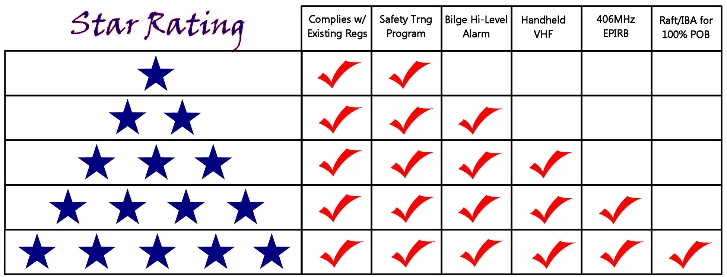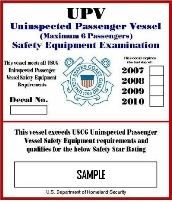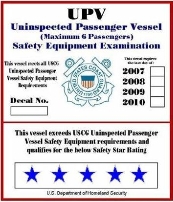 Voluntary UPV 5-Star Safety Program A voluntary safety program designed to increase safety aboard uninspected charter boats operating throughout the state of Alaska. Past marine accidents and Alaska's harsh operating environment pointed to the need for an increase in the level of safety equipment that extends beyond the minimum required by regulation. Charter operators who choose to participate in the 5-STAR SAFETY PROGRAM have met all the regulatory requirements, received the UPV decal, and have voluntarily invested in additional safety equipment. There are a total of 5 voluntary safety related items. The level of additional equipment is indicated by the number of safety stars displayed on the UPV decal. One star will be awarded for each additional measure properly implemented and imaintained on board these vessels. | ||||
|
Description of the 5 Star Safety Ratings One safety star will be awarded for each of the five items listed below. The list of safety items is not meant to be in a fixed, specific order, where prior to getting to the next level you'd need to obtain all the preceding safety gear. Vessels are given credit for safety gear that is installed and properly maintained, regardless of order. A 1 star vessel would meet one of the requirements, while a 5 Star vessel would carry safety equipment substantially in excess of Coast Guard regulations, including an EPIRB, inflatable life raft or inflatable buoyant apparatus, back up handheld communications capability, and high water bilge alarms with high capacity bilge pump. One Safety Star shall be issued for each of the additional measures listed below:
|












